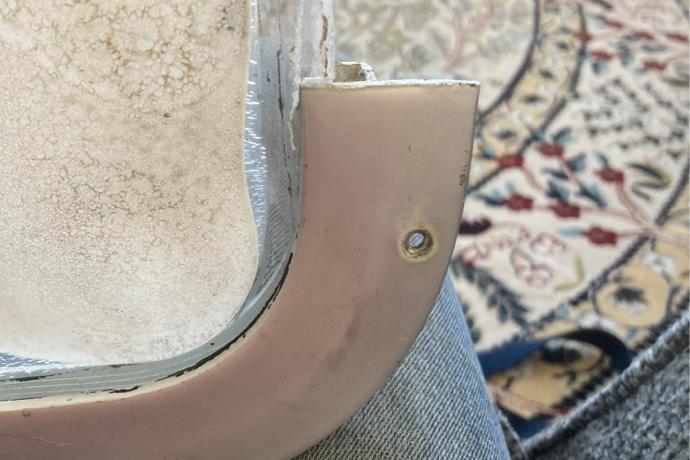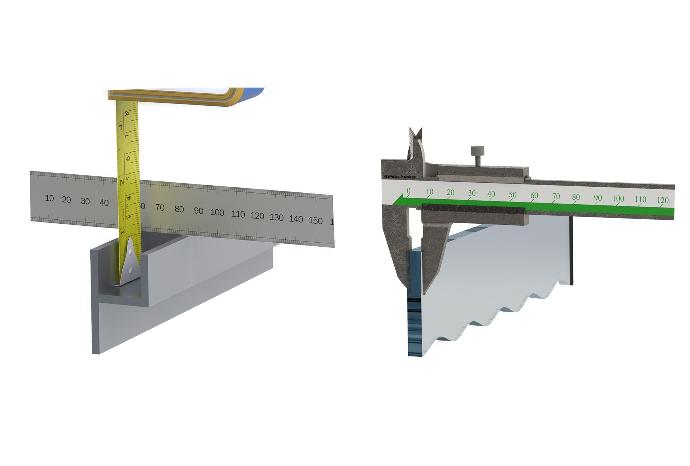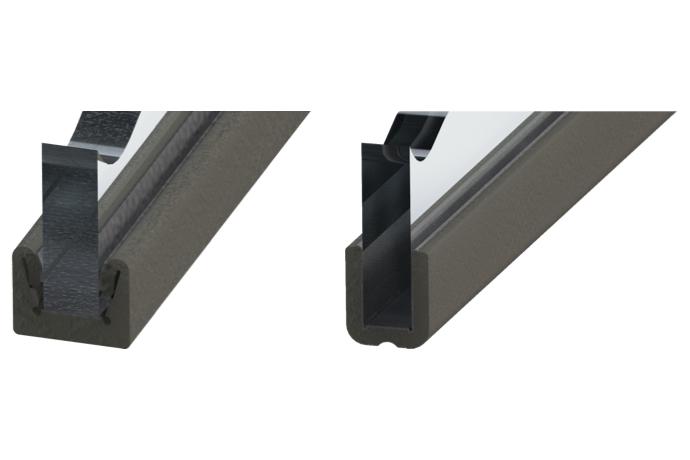The rubber seals in your sliding windows will eventually wear and deteriorate. Sliding windows on boats, old caravans and some other vehicles often have sliding windows in Aluminium frames. Historically, these windows used either a felt or webbing material to allow the window to slide within the channel. These seals have been replaced with a flock (velvet) covered rubber or polyester ribbon which is more hard wearing. There are two main types: a preformed ‘U’ shape or a flat strip that bends to fit inside a channel.
Step 1: Remove the Sliding Aluminium Window Frame

Remove all of the fixing screws from the aluminium frame. It is useful to have an extra pair of hands when doing this as you will need one person either side of the fixing screw.
Once you have removed all of the screws, remove the window frame from the aperture making sure that it is kept flat to avoid bending. If the frame was previously bonded in place with mastic, use a blunt scraper to ease the frame away.
Clean up the old frame using a blunt scrapper removing all of the old sealant and mastic. It is best to avoid using screwdrivers and other sharp tools as these may damage the aluminium window frame.
Step 2: Remove the Window and Existing Seal

Your window frame will probably be made up of several different parts. Remove the screws that are holding each piece together. Once the screws have been removed, carefully tap a thin scraper into the joint. Taking care not to damage the frame, repeat this process on each joint until the frame is separated. Once you have dismantled the frame remove the old sliding window seal and glass.
For windows which are subjected to the marine environment we recommend that you soak all items in a bath of fresh water for a couple of hours to help loosen and dissolve any residue salt deposits.
If the condition of the window has deteriorated or it has broken, we recommend sourcing new glass or Perspex. A lot of windows are now made from Perspex. Whilst this is a good material for some windows, it can deteriorate and discolour over a long period of time. If you wish to replace your window with Perspex, please draw around your existing window pane onto brown/plain paper and send it to us for a quotation.
Step 3: Take Measurements from the Aluminium Window Frame and Glass

You will need to take three measurements from the aluminium window frame and window pane to determine the best replacement seal.
1. The thickness of the window pane (ie, the glass / Perspex)
2. The internal width of aluminium channel
3. The internal depth of aluminium channel
Once you have taken these measurements, you will need to decide whether you want to use a flocked lined seal preformed into a U shape, or a flat strip that you can bend to fit inside a channel.
Step 4a: Using a Flocked Channel in a Sliding Aluminium Frame

To identify the best replacement seal to use with your sliding aluminium window you will need to look at our available sections and your measurements.
In most instances you will be able to use U shaped flocked channel. For example, if the internal width of your aluminium channel is 12mm and the thickness of your glass is 4mm you can use FWR148. This seal fits into a 12mm x 12mm channel and takes a 4mm to 5mm thick glass.
If you are not able to find a U shaped flocked channel, you will need to consider using either a flocked lined strip or polyester strip. When deciding on which sliding window strip to purchase, ensure that there is enough space within the channel to allow for the glass and thickness of the strip either side of the glass.
Step 4b: Fitting a Flocked Channel into a Aluminium Window Frame
To fit your replacement seal measure the length around the window frame. Cut the new seal to this length leaving it slightly oversize to prevent it shrinking back over time. Apply a small bead of marine grade silicone sealant inside the aluminium channel and insert the rubber seal into the frame.
Carefully place the glass into the frame and position all bits together until they are in the correct location. Now replace the screws into the joining strips.
Step 5: Refitting the Completed Window
When refitting the completed window we recommend inserting a sponge seal between the aluminium frame and cabin side. Our adhesive backed closed cell expanded neoprene does not absorb water and can be used for this purpose. We recommend using a strip around 3mm thick and slightly wider than the flange. Any excess can be trimmed off when the window is fully fitted.
Peel off the release tape to reveal the sticky backing and stick the strip to the frame. Pre drill the bolt holes and then smear a small amount of silicone sealant onto the top face of the seal. This will accommodate any minor imperfections and stop any leaks. Fit the screws and tighten up to achieve a 30% compression on the seal. Carefully trim the expanded neoprene around the edge of the frame using a sharp knife, and wipe away any excess sealant.